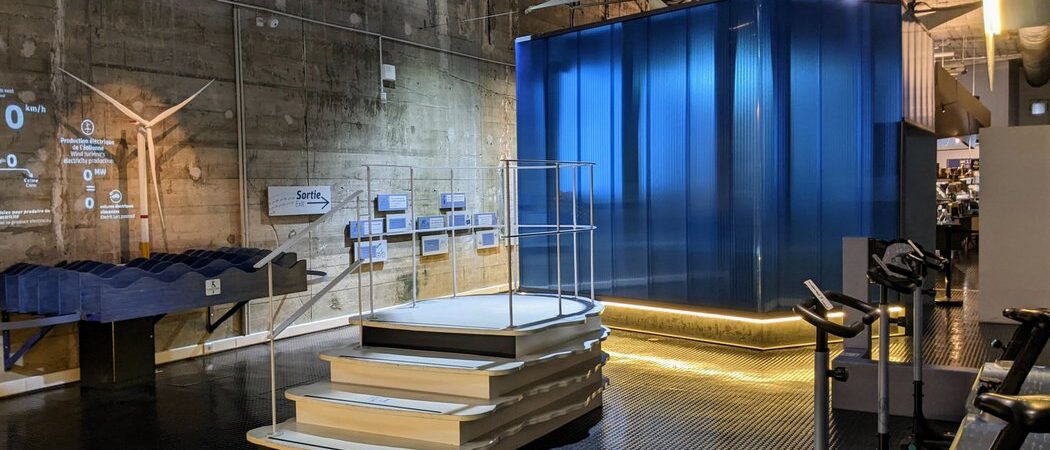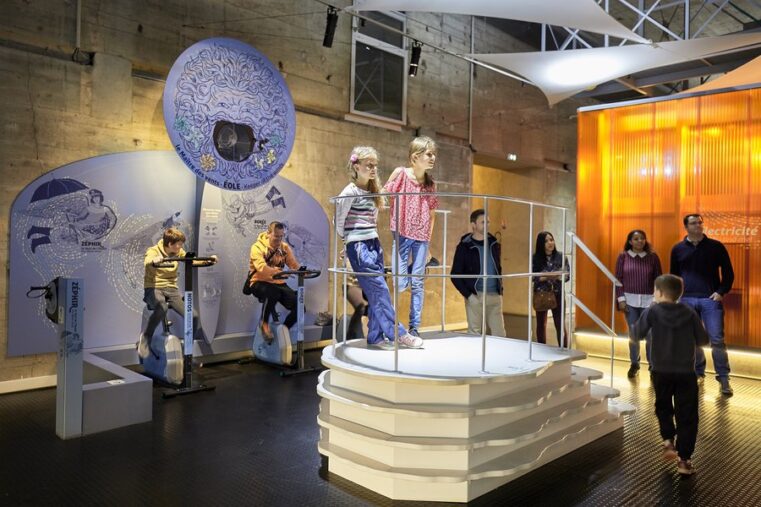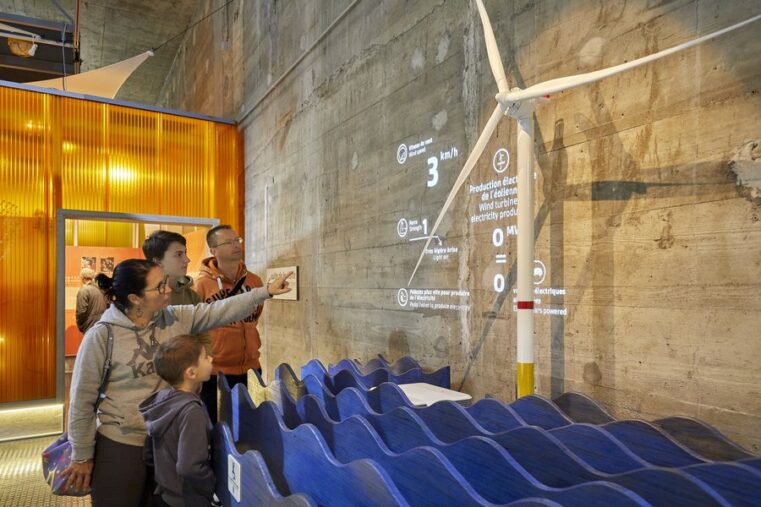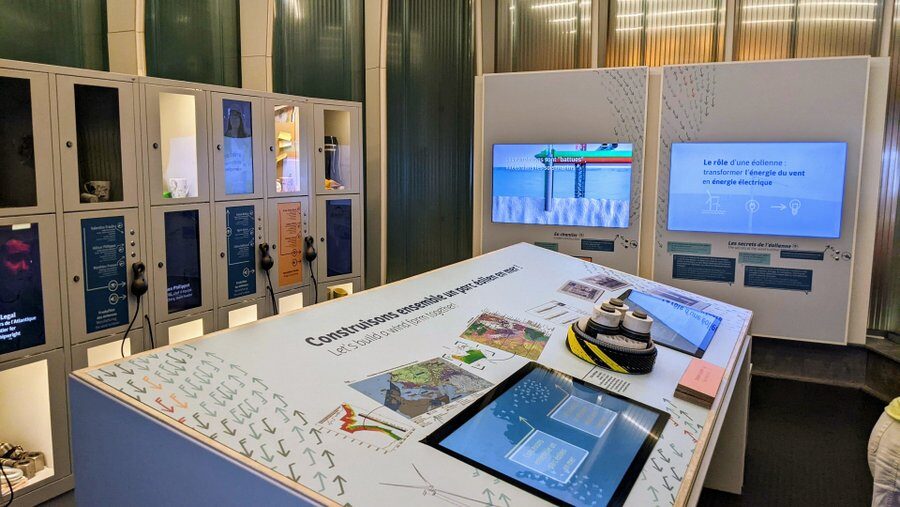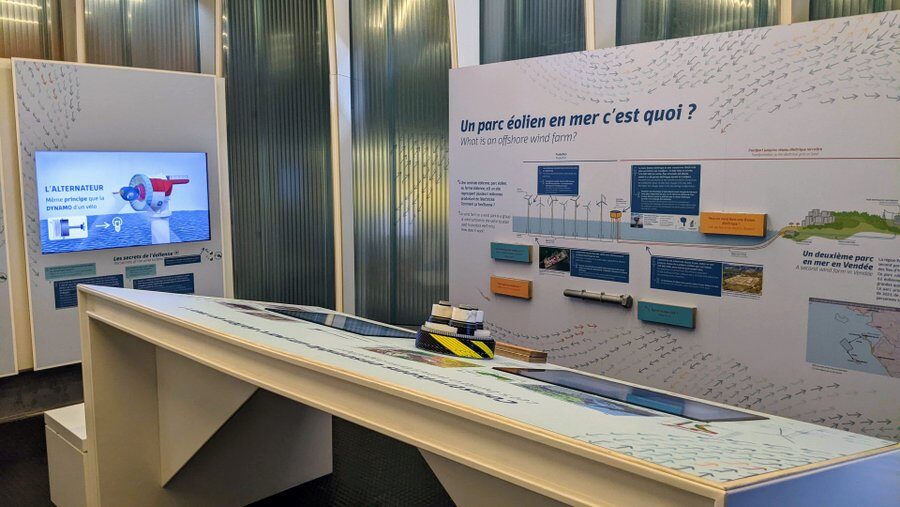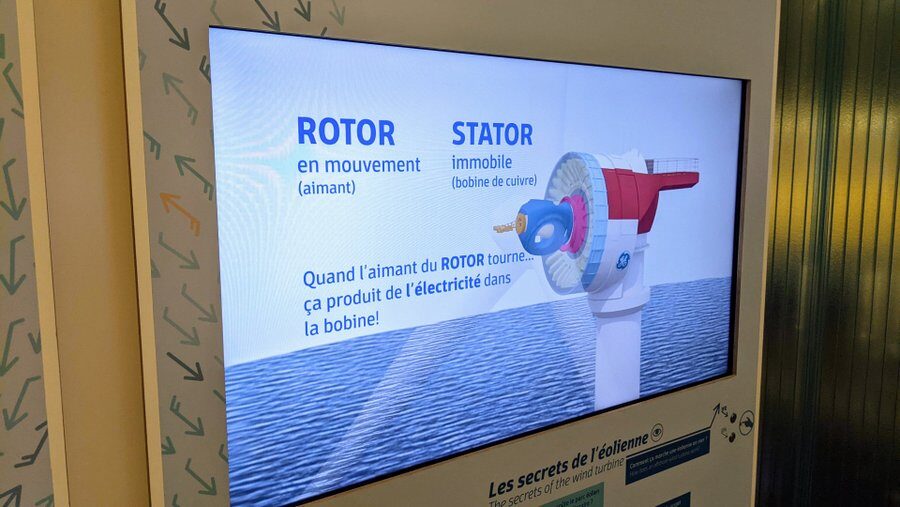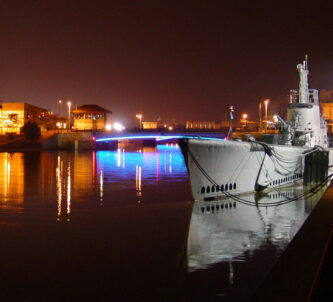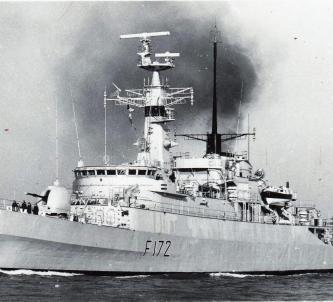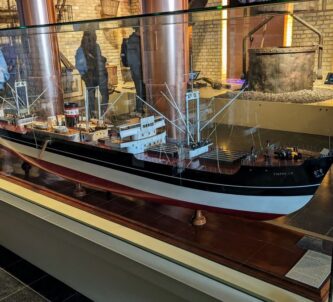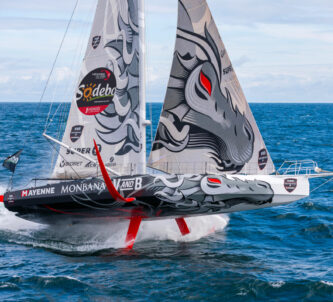The EOL Centre éolien – Offshore Wind Farm Visitor Centre in Saint-Nazaire is the first and only such centre in France. It opened in 2017 and is designed very much with family and school groups in mind. The centre explains how wind turbines and wind farms work using hands-on immersive displays and experiences.
France’s first offshore wind farms
As part of its commitment to fight climate change, France has set itself a target of reaching 32% renewable energies in its energy consumption by 2030.
In April 2012, a consortium led by EDF Renouvelables was awarded a contract for the construction of the country’s first 3 offshore wind farms along the French coast at:
- Saint-Nazaire (Loire-Atlantique) – 80 wind turbines producing 480 megawatts, due to come online by the end of 2022.
- Fécamp (Seine- Maritime) – 71 wind turbines producing 500 megawatts, due to come online in 2023.
- Courseulles-sur-Mer (Calvados) – 64 wind turbines producing 450 megawatts, due to come online at the end of 2024.
The Fécamp and Calvados fields are using Siemens-Gamesa turbines, whereas the Saint-Nazaire field is using General Electric turbines, but they are all using electricity substations built by Chantiers de l’Atlantique, so Saint-Nazaire is a logistics hub for this new offshore wind farm industry, which is why the EOL Centre éolien is based here.
Other Saint-Nazaire Posts
By the way, us Brits are ahead of the pack on this.
In 2020, 25 Gigawatts of offshore wind power was being generated in Europe. Of that, 40% was generated by the United Kingdom. The rest was split between Germany, Belgium, Denmark, the Netherlands, Sweden, Finland, Ireland, Portugal, Spain, Norway and France. (Source: France Energie Eolien)
So do we have any offshore wind farm visitor centres? Yes, a couple: The Sheringham Shoal Wind Farm Visitor Centre, and the Rampion Offshore Wind Farm Visitor Centre on Brighton’s seafront.
Inside the EOL Visitor Centre
The space is divided up into display areas, starting with a circular room with a video presentation on the history of wind machines and our relationship with wind.

In the main area of the hall there is an interactive demonstration of wind generated power. On one side there’s a set of exercise machines that power a fan above. The fan blows across the hall – you can stand on a plinth to experience it – and turns a wind turbine on the other side and its power output is projected on the wall behind it.
A word on names…
Every schoolboy knows the French for ‘wind’ is “vent”. So where does ‘éolien’ come from? It also means ‘wind’ or ‘spirit of the wind’. It’s a more romantic word for the capricious character of the wind. A wind turbine, by the way, is an ‘éolienne’.
It comes from the ancient Greek god, Aeolus (French name Éole), the Keeper of the Winds aka the God of Storms. His offspring, via Eos, the Titan goddess of the dawn, were the four ‘Anemoi’ (eg ‘anemometer’) – Boreas controller of the north wind, Notus controller of the south wind, Zephyrus controller of the west wind, and Eurus controller of the east wind.
If you look at the 3 exercise bikes and 1 hand winch used to generate the winds across the hall, you’ll see they are named after the Anemoi.
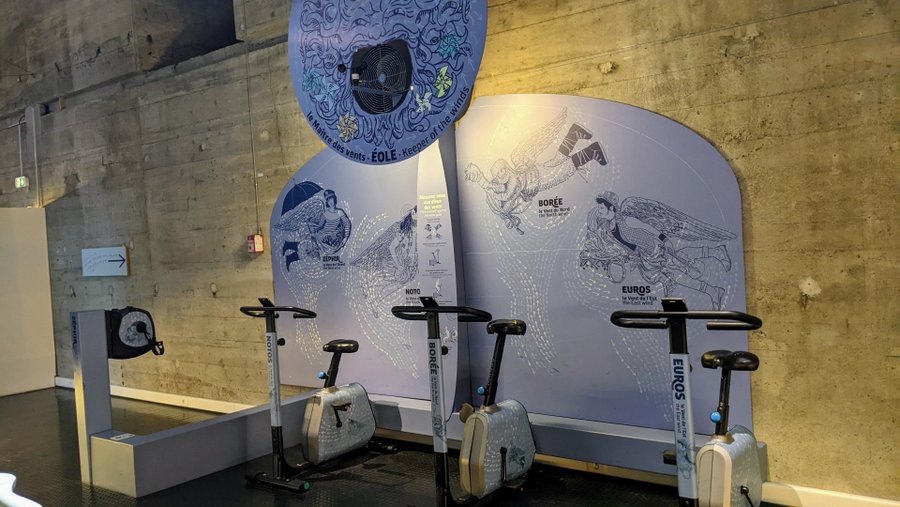
Other display areas focus on our use of energy, the growth of electrical devices, and how much electricity everyday household devices use.
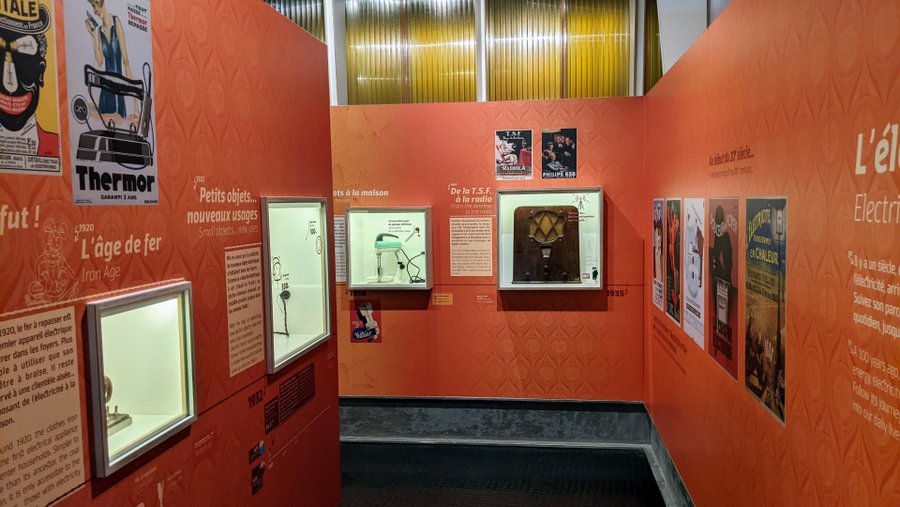
And there is a section devoted to the construction of a wind farm and how the wind turbines work.
This section is quite good. I learned a few things I didn’t know, such as turbine speeds. For wind speeds of 10 to 90 kph the typical wind turbine blades will turn at a rate of 4 to 12 rotations per minute. So, in 90 kph winds (Hairy! A ‘Storm 10’ on the Beaufort scale) the blades would rotate at a fairly leisurely rate of once every 5 seconds. Try drawing a circle with your finger in the air in 5 seconds. It’s quick but not crazy quick!
Outside the EOL Visitor Centre
Outside the building there is a set of metal stairs to the roof of the fortified lock building, or if you prefer, a lift – phew!
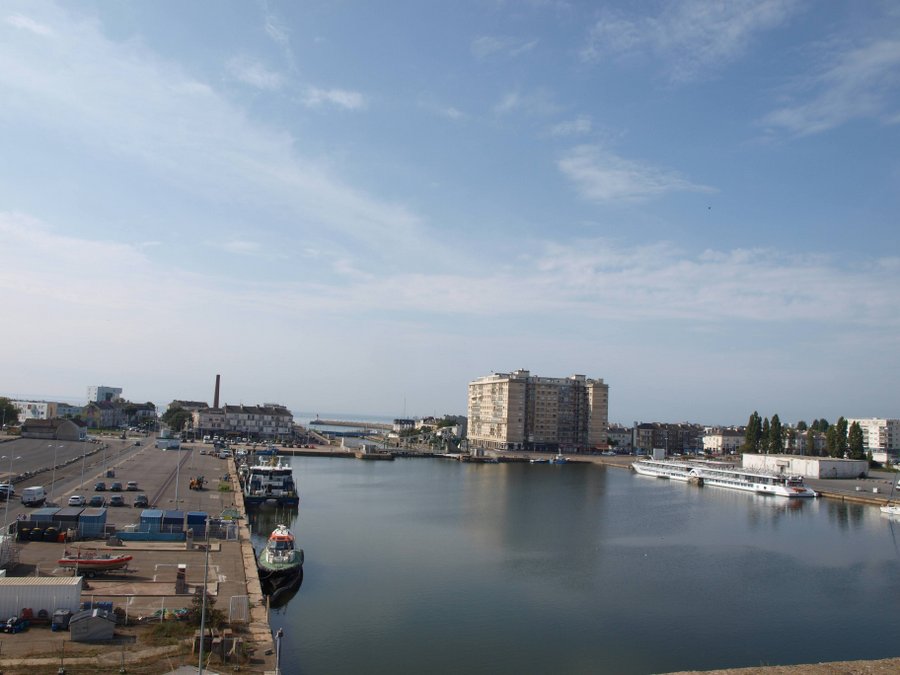
From the roof there are spectacular views of the Saint-Nazaire basin, the submarine pens, the Penhoët Basin… and the Joubert Lock on the edge of the Chantiers de l’Atlantique shipyard.
These days the lock is the logistical centre of operations for the Saint-Nazaire Wind Farm construction and for other/future wind farm constructions.
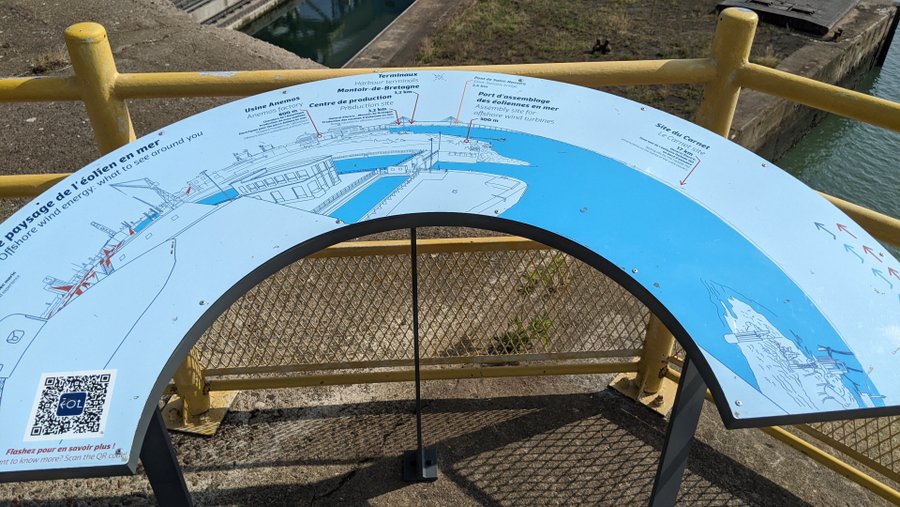
On the roof you’ll find an orientation sign pointing out the various parts of the new wind turbine industry in this location.
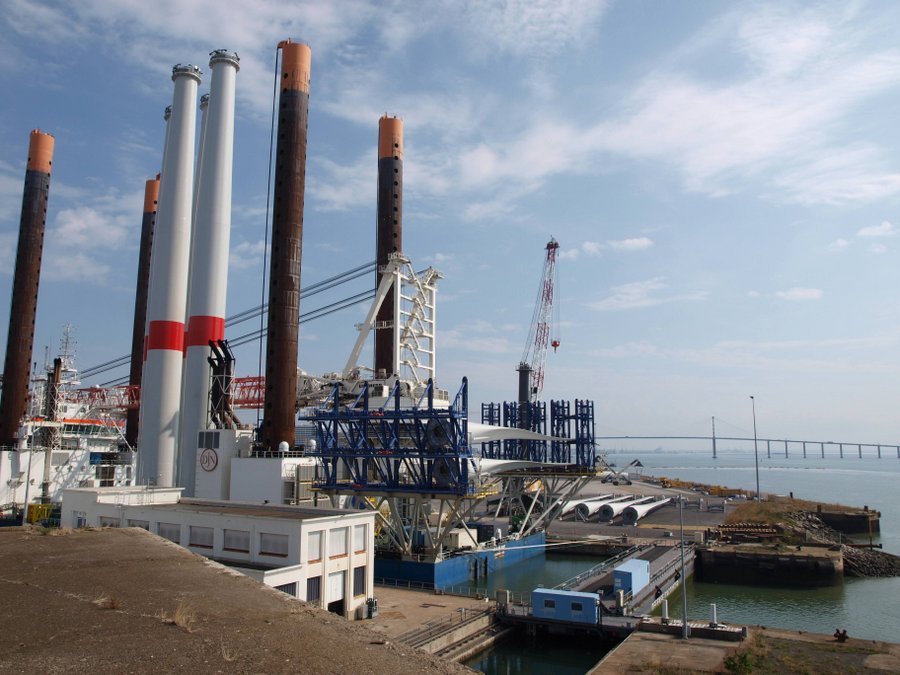
When we were there, the brilliantly named Vole au Vent (Fly in the Wind) wind turbine construction ship, was loading up for what must have been one of her last trips out to the Saint-Nazaire wind farm. In this view you can see the turbine blades loaded into racks on her stern and more waiting on the quayside. The four yellow-capped pylons are her legs. She jacks herself out of the water on those. The four grey pylons with red bands are the wind turbine pylons that she will install, and out of sight on the deck is where she carries four turbines in their nacelles.
It’s difficult to get a sense of scale, but those are shipping containers on the back under the blade rack, and look at the staircase on the ship’s crane!
That lock gate, by the way, is the new version of the lock gate that HMS Campbeltown rammed and blew up in March 1942 (Operation Chariot).
Building the Wind Farm
Where the wind turbines in the Fécamp field are mounted on huge concrete towers with wide bases that use gravity to settle into the sea bed, the Saint-Nazaire & Calvados fields use steel tube pylons driven into the sea bed.

Another ship, Innovation, has been collecting the steel tubes, three at a time, from La Rochelle and bringing them to the field. Innovation jacks herself up on legs, and pounds them 12-25 metres into the ground. She has also collected three yellow painted ‘transition pieces’. The transition pieces are connected to the top of the steel tubes and stand 25 metres clear out of the water, waiting for Vole au Vent to come along with the turbines. Innovation has been doing that since May 2021 and completed her work in May 2022.
Out of sync with Innovation, Vole au Vent can carry FOUR pylons, four nacelles containing the turbines, and twelve blades (three each). So she has been bolting the 81 metre pylons onto the transition pieces, lifting the nacelles (400 tons) with the GE Haliade 150 turbines (1,500 kilograms each!) 100m above the sea onto the top of each, and adding the 75 metre blades from April through to September 2022. (By the way, a decade ago 75m blades were gigantic state-of-the-art innovations. Now though, they’re building 115m blades !)
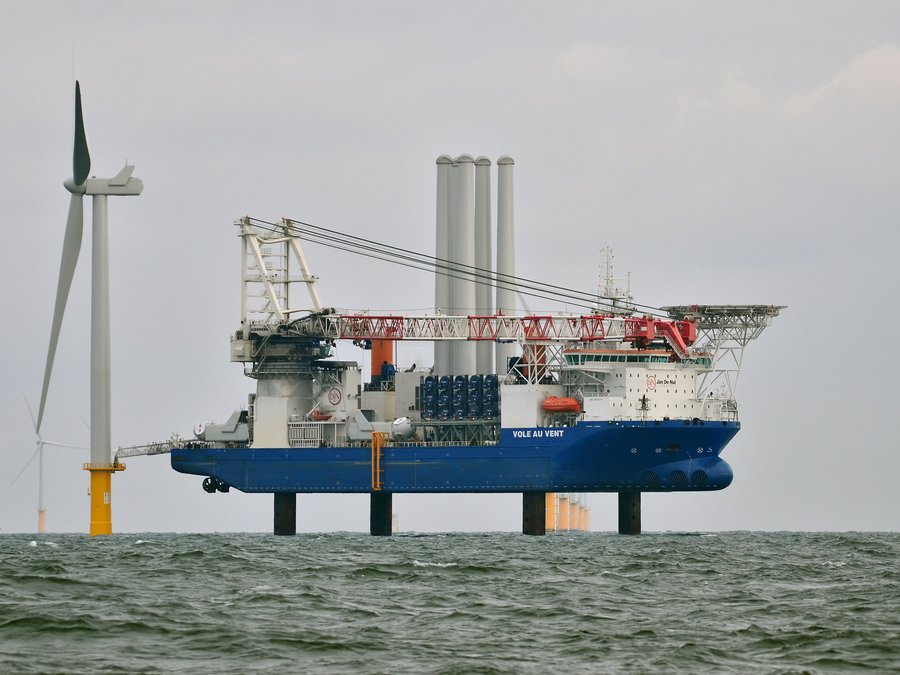
Meanwhile the electricity sub-station and its support platform has been carried out to the field from the Joubert Lock, installed, and connected up to the 80 wind turbines and to the shore station in Prinquiau (inland from Saint-Nazaire) via Courance beach where it comes ashore 13 kms away. When it is ‘switched on’ in a few weeks time, it will be able to generate the equivalent of 20% of the electricity consumption of the Loire-Atlantique department.
The Saint-Nazaire wind farm may be rapidly nearing completion but these activities will continue for future Atlantic coast offshore wind farms, and from the roof of the fortified lock building, you’ll be able to look down on them.
UPDATE (24/11/2022): The Saint-Nazaire offshore wind farm has been commissioned and is now fully operational. The 480 MW wind farm, also known as Parc éolien en mer du Banc de Guérande, is France’s first offshore wind farm. It was inaugurated in September by President Macron.
Declaration: I was on a self-driving press trip as a guest of the Saint-Nazaire tourist office. Museum entry was complimentary.
Factbox
Website:
EOL Centre éolien
Getting there: EOL Centre éolien
Avenue de la Forme Ecluse
Saint-Nazaire
The EOL Centre éolien shares the fortified lock building on the east side of the Saint-Nazaire Basin with the submarine Espadon. The building is built like a 2 x pen version of the submarine pens opposite. The Espadon floats in one pen. The second pen is a concrete wharf. Half of it has the shared entrance, ticketing, lockers, toilets & shop. The other half has the EOL Centre.
Entry Price (2023):
| Adult | Reduced* | Child (4-17) | |
|---|---|---|---|
| EOL Centre éolien | € 6.00 | € 5.00 | € 3.00 |
| Combined Ticket (Escal’Atlantic + Espadon submarine + Écomusée + EOL Centre éolien) | € 28.00 | € 14.00 | |
| Fortified Lock Combo (EOL Centre éolien + Submarine Espadon) | € 16.00 | € 8.00 |
* Reduced tickets are for students, job seekers, people with disabilities with one accompanying person
Children under the age of 4 and Annual PASS holders have free entry. Admission is also free on the first Sunday of the month, except July and August.
NB. I’m not overly impressed with the pricing. Despite being smaller and less interesting than the Écomusée nearby, it is 1 Euro more expensive. And, since the EOL Centre éolien appears to be essentially a public relations exercise for the EDF Renouvelables consortium and the Saint-Nazaire Offshore Wind Farm Project… shouldn’t it be free?
Opening Days:
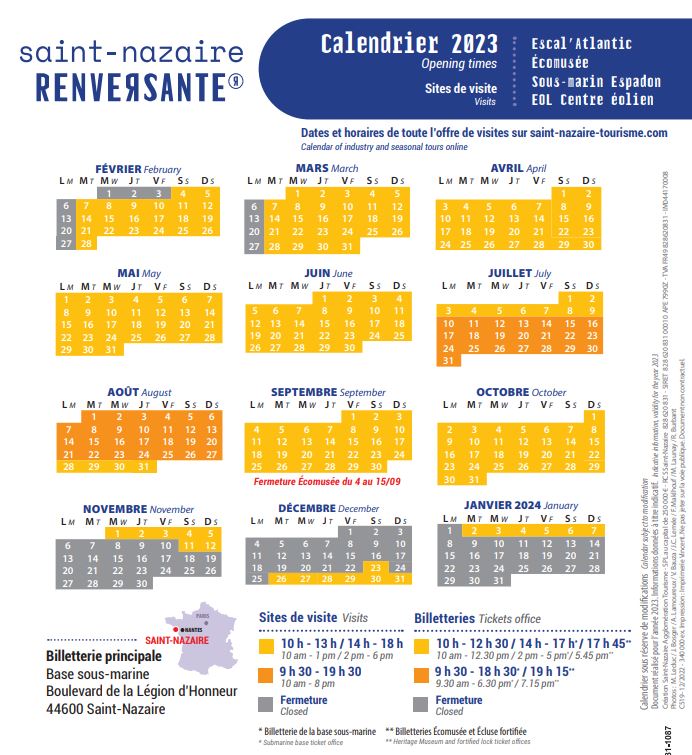 The four Saint-Nazaire Tourisme attractions (EOL Centre éolien, Submarine Espadon, Écomusée & Escal’Atlantic) share the same calendar. They are open on most days during the summer but as you get into the winter the dates become more specific and you need to check if the actual date you want to visit is available on the website.
The four Saint-Nazaire Tourisme attractions (EOL Centre éolien, Submarine Espadon, Écomusée & Escal’Atlantic) share the same calendar. They are open on most days during the summer but as you get into the winter the dates become more specific and you need to check if the actual date you want to visit is available on the website.
Opening Hours:
Tickets for the four attractions are timed. Tickets for the EOL Centre éolien are based on a 45-minute visit (too long, unless your kids are loving the interactive stuff and can’t be torn away. 20 minutes is more like it) and sold in 10 minute time slots.

